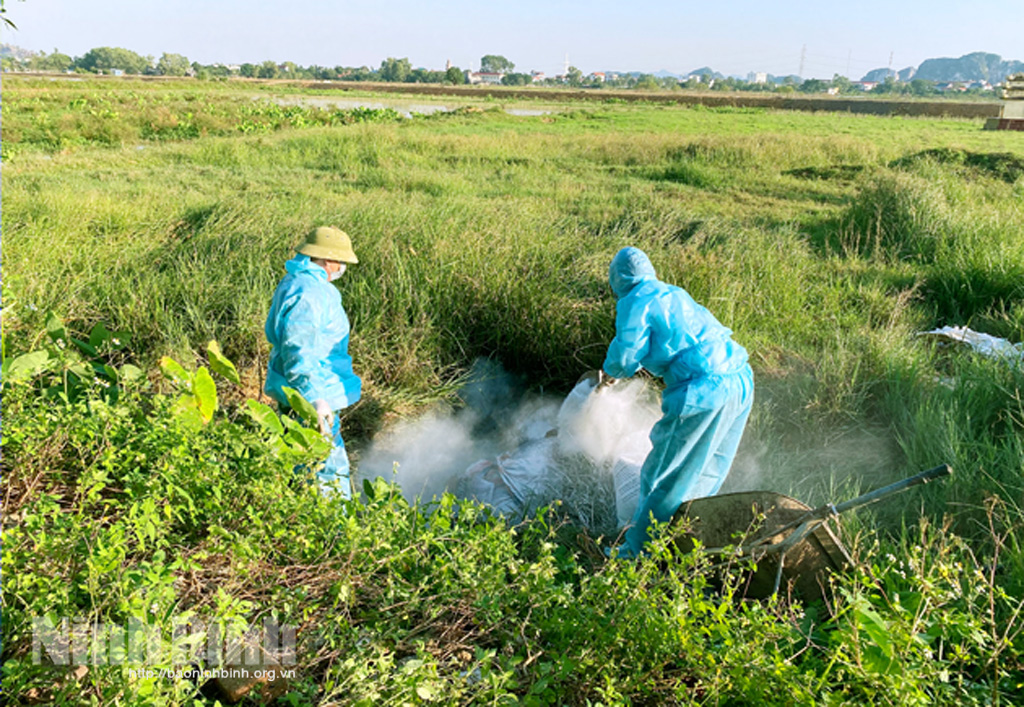Ninh Binh actively takes measures to prevent African swine fever outbreaks

Over 70 communes in all eight districts and cities confirm ASF outbreaks
At the end of October and in early November, nearly 80 pigs of Le Van Voc, a breader in hamlet 6 in Khanh Thuy commune of Yen Khanh district, infected with African swine fever, forcing him to destroy the animals.
Voc said sadly: "My family spent all of our capitalbreeding these pigs, but now we have nothing left. We hope the State will provide support for us to overcome this difficult time."
Vice Chairman of the Khanh Thuy Commune People's Committee Nguyen Van Manh said the commune is a key area of livestock breeding of Yen Khanh district with over 9,000 pigs, accounting for a quarter of the district's pig herd. The reappearance of ASF forced eight local households to cull over 200 pigs. Both the local administration and people have been very worried because the disease has been badly affecting income sources of local breeders.
In an attempt to prevent the spread of the ASF, the local authorities have reviewed the number of pigs in the locality, disseminated information about the disease and asked local breeders to strictly implement prevention and control measures and not to hide the disease. They were also requested to disinfect their pigsties.
By November 8, 12 communes in Yen Khanh district had comfirmed cases of ASF infection with over 1,000 pigs being killed.
In Gia Vien district, ASF outbreaks have been recorded in 14 out of 21 communes and towns with nearly 1,900 pigs contracted the disease. And the disease was also found in pig breeding households.
According to the Sub-department of Livestock Breeding and Animal Health, since September 2021, the ASF has strongly breaken out in many areas. By November 8, over 9,000 pigs of nearly 2,000 breeding households had infected the disease, resulting in the destruction of more than 7,000 tonnes of hogs.
ASF threatens Ninh Binh's efforts in recovering big herds
In 2019, the ASF caused great losses to Ninh Binh's livestock breeding sector. Nearly 108,700 pigs were killed with a total of 6,300 tonnes of hogs. Many households and pig farms left their jobs. Since 2020, thanks to the cooperation between the veterinary force and localities in taking active measures to prevent the disease, the province's pig herds have been recovered with 274,500 hogs by the third quarter of 2021, up 28.7 percent against the same period last year.
Nguyen Tien Manh, Head of the Sub-department of Livestock Breeding and Animal Health, said the ASF has been mainly recorded in small breeding farms, and been controlled in a small scale, so the disease will not basically affect the pork supply for the market at the end of 2021 and beginning of 2022.
However, the disease may break out in a large scale due to the high demand for transporting, slaughtering, and consumption of pork during festivals and important events in the year-end months.
If localities do not take drastic measures, the disease will penetrate in large-scale hog breeding farms, the breeders will suffer great losses. As a consequence, it will take more time to recover hog herds and breeders will face more difficulties.
Amid complicated developments of the disease, the provincial Department of Agriculture and Rural Development has allocated more than 10,320 litres of chemicals for districts and cities to disinfect the environment.
At the same time, it has constantly informed farmers about the disease and urged them to protect their hog herds.
In the time to come, the department will continue to inspect the ASF prevention and control work in localities, especially in the disease-hit areas.
It will impose strict punishments on those who conceal the disease, enabling it to spread widely and badly affect the community.
The department will continue to coordinate with districts' authorities to conduct vaccinations for cattle and poultry herds and disinfect the environment.
The province strives to curb the disease in order to protect its outcomes in recovering hog herds, meeting consumers' demand amid the complicated COVID-19 pandemic.
Translated by Nguyen Thuy


